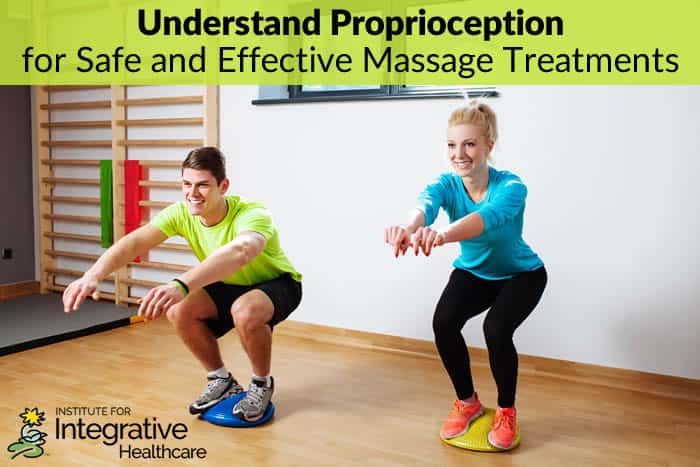

Without looking or moving, where is your left foot right now? The majority of us are able to determine the answer to that question because of proprioception, the ability to know where your body is in relation to itself and the environment. As we know, agonist muscle(s) move the body while fixators, or muscles that stabilize the body while we move, hold the rest of us in place. This is how we can move our leg forward without falling on our faces.
Proprioceptors
Proprioceptors are nerve endings embedded in the muscle fibers, tendons and joints that inform the central nervous system about location and movement of the body. There are different types of proprioceptors throughout the body. Some are stretch receptors, which send information to the brain about tension levels in the muscles. Stretch receptors in the tendons, like the Golgi tendon organs, sense tension, a safety precaution against tearing. Other proprioceptors inform the brain of the position and movement in the joints. Another important factor of proprioception is that of interpreting the force necessary to perform an action: it is what allows us to gently pet a kitten or demolish a wall with a sledge hammer by controlling the force of our movements. Proprioception is what allows us eye-hand coordination and balance.
Integrity
An important concept to understand regarding proprioception is that of integrity, or the concept that the body is like a suspension bridge and everything is connected, so increased tension in one area ‘pulls’ on another area of the body. This is why it is common for habitually bad posture to cause increases in joint and muscle pain and shortening of muscle tissue, resulting in any number of functional movement difficulties.
Proprioception and Massage
What does proprioception have to do with massage therapy? Massage therapy cannot only help in managing pain, but can also increase our awareness of the tension in our bodies. Most of us have had the experience where a client is on the table who didn’t realize how tight some area was, or never thought it would hurt so much. This is because, over time, they become used to stimulus from proprioceptors, conditioned to it, even though they are experiencing mild discomfort or pain. This is especially common when an area is being affected by bad posture, as chances are they have been habitually assuming the misaligned posture for years. When massage reduces the tension in the muscle and/or lengthens the tissue, the client can then relax and finally become aware of how tight the area actually was! It is not uncommon for clients to notice that there was a problem only after having received bodywork.
Gate Control Theory
Bad posture and stress injury to muscle tissue can bring about chronic muscle strain, muscle soreness and joint pain. Proprioception is behind one of the key reasons massage therapy is excellent for pain management: known as the Gate Control theory. When we experience an injury to a muscle, pain receptors are sending the message to the brain that the area hurts. These messages do not travel as fast as the proprioceptive messages of muscle movement and location, so when we receive massage, those proprioceptive messages beat the pain signals to the brain, overriding the feeling of pain. This is a major reason why massage therapy is so effective in pain management.
Proprioceptive Neuromuscular Facilitation
Massage therapy can also use proprioceptive actions to lengthen and stretch muscle fibers. Proprioceptive Neuromuscular Facilitation (PNF) stretching is a post-isometric relaxation stretching method where a muscle is passively stretched, then undergoes isometric contractions against resistance while in the stretched position, then is again passively stretched through the resulting increased range of motion. This is a great technique to restore mobility when muscle has become shortened, especially due to poor posture. Another technique that uses proprioception is that of reciprocal inhibition, or the relaxation of antagonist muscles. For example, to stretch the biceps, contract the triceps to aid in the release of the biceps.
It is also important that massage therapists work with the proprioceptive actions in the body. Stretches must be done slowly and held to allow the stretched proprioceptors to become accustomed to the new position. This is what creates length in the muscle. When we stretch a client too quickly, the Golgi tendon organs sense the tension and interpret it as a danger to the tissue, sending the message to the brain that there is the danger of tearing. The brain then responds with the signals to contract the muscles around the area to protect against further injury.
Understanding proprioception is an excellent step in giving safe, effective massage treatments to your clients.











